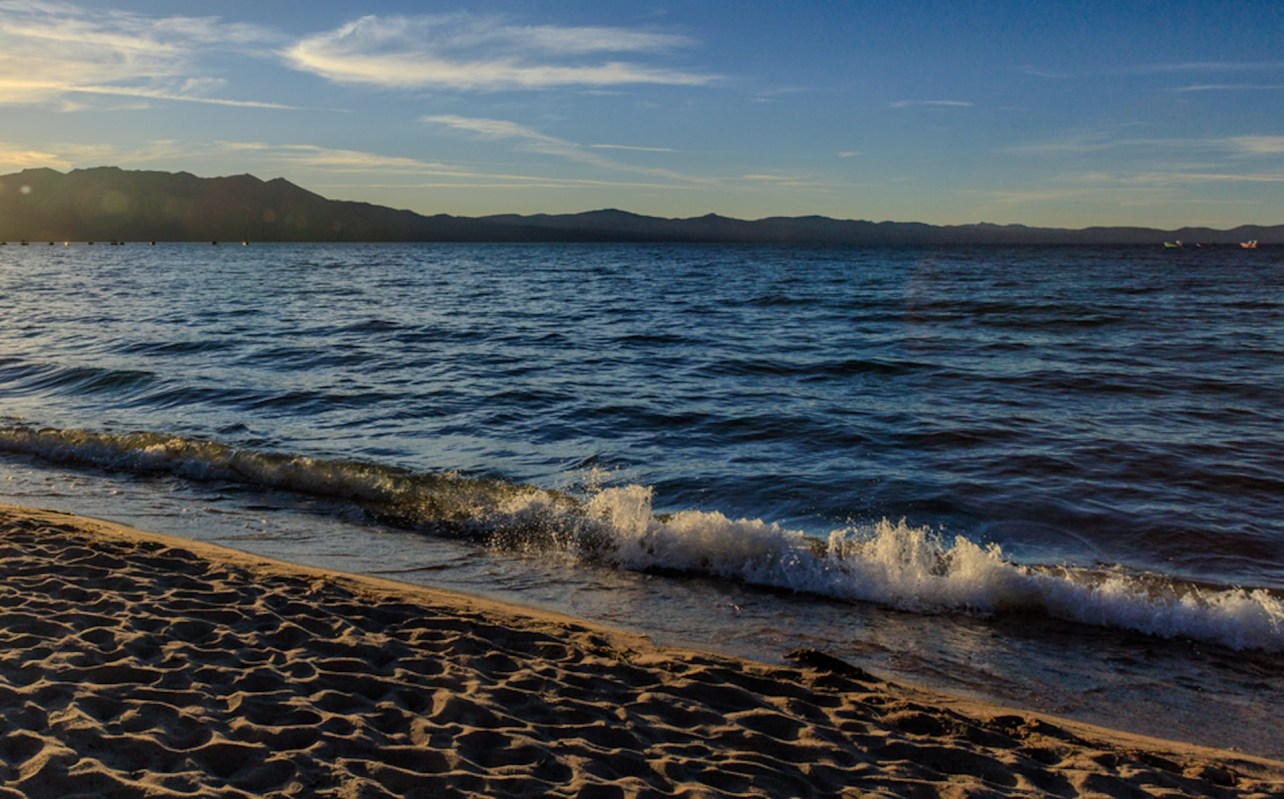Docks are seen by lake users as safe places. Unfortunately, the same can't often be said of docks for the lakes themselves. This is a fact that beautiful Lake Tahoe recently learned, and not for the first time.
What happened?
The shores of the famously blue lake were recently sprinkled with white, and not from the snow typical of the area this time of year.
As detailed by The Guardian, the material was actually expanded polystyrene beads.
Colin West, founder of local non-profit Clean Up the Lake, told the outlet that the beads — the same kind used to fill beanbags — look to be remnants of a floating dock that disintegrated, likely after colliding with a boat ramp. Waves created by a storm washed the beads ashore.
Why is it concerning?
Pollution like this wreaks havoc on the lake, whose waters and beaches are regularly ravaged by increased tourism. This makes it more difficult for locals and tourists to enjoy the lake recreationally and threatens human and ecosystem health.
"These beads, believed to be made of expanded polystyrene, can have detrimental effects on aquatic life and pose serious threats to the overall health of the environment," Clean Up the Lake said in a statement, as reported by The Guardian. "These threats include the further breakdown of these beads into microplastics which aggravate an already troubling issue for Lake Tahoe."
Plastic pollution is a growing global problem. As of 2016, there were about 267 tons of plastic waste worldwide, which has undoubtedly grown. Once they enter the environment, conventional plastics may take tens to hundreds of years to break down.
As they break down, they create microplastics — tiny plastic particles less than five millimeters long that are incredibly invasive. Microplastics have been found everywhere, from drinking water to the stomachs of animals to human hearts.
Further, a recent study showed that they also act as carriers for pathogens, posing an even greater risk to the health of humans and wildlife.
What's being done to help?
After an extensive cleanup, volunteers managed to remove as much as 90% of the beads, but thousands remain mixed in the sand and snow, according to West.
"We've kind of done everything we can do manually," he told The Guardian. "This kind of spill is just really terrible and one of the hardest things to clean."
He further pointed out that this occurrence sheds light on the need to stop using the beads in docks and anything else that has contact with the lake and that more education is needed for visitors to avoid bringing anything that contains a similar material to the beach.
We can all do our part to help places like Lake Tahoe thrive by reducing our reliance on single-use plastics. We can also follow the lead of those around us who are setting positive examples by practicing "leave no trace" and cleaning up trash on beaches, trails, and even in our own neighborhoods.
Join our free newsletter for cool news and cool tips that make it easy to help yourself while helping the planet.








